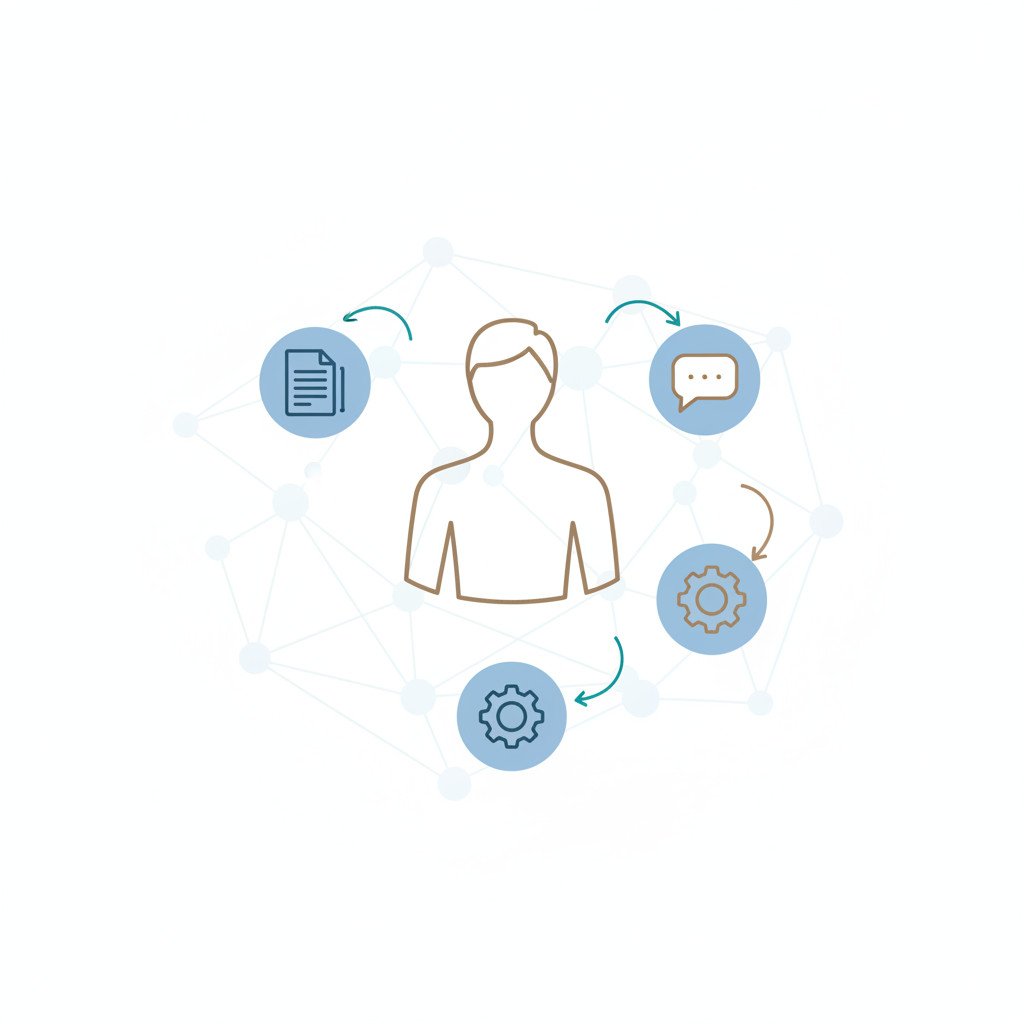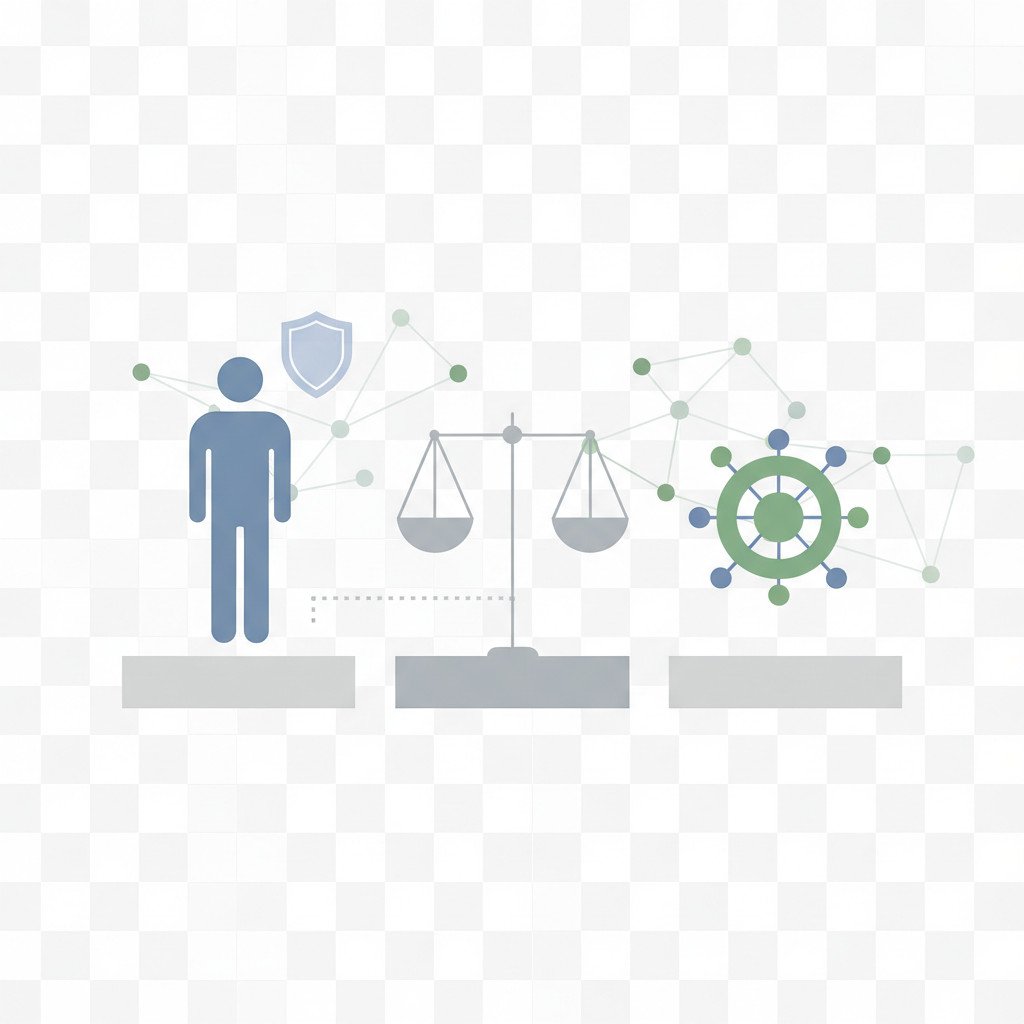Agentic AI promises to transform how organizations automate work, acting as proactive AI agents across tasks. It can free teams from repetitive jobs and boost speed, accuracy, and customer outcomes. However, the technology only delivers value when the non-AI foundations are solid. Therefore, leaders must prepare processes, governance, and data before deploying agentic automation at scale.
Because workflows stay fragmented, many pilots fail to link agents into end-to-end workflows. As a result, organizations miss measurable impact despite heavy investment in generative models. For example, a viral MIT study found most enterprise implementations did not deliver impact. Thus, success depends on role clarity, change management, and strong process intelligence.
Moreover, governance prevents agent sprawl, while data quality unlocks reliable automation outcomes. This article shows practical steps to prepare your organization for agentic AI adoption. You will learn how to align people, tools, and processes for agentic orchestration success. In particular, we cover governance, training, role-based access, and testing patterns that scale.
Finally, the non-AI groundwork will turn experiments into measurable customer value and long-term advantage. We focus on practical governance, process mapping, and hands-on workshops for quick adoption. Start here, and your teams will harness agentic AI to create durable automation value.
Agentic AI Demands Strong Non-AI Foundations
Agentic AI can unlock massive automation gains when teams prepare the ground first. However, tools alone do not create value without clear processes and ownership. Therefore, organizations must invest in governance, data quality, and process intelligence. This reduces agent sprawl and links agents into end-to-end workflows. As a result, pilots move from experiments to measurable customer value.
What is agentic AI and how does it differ from traditional AI?
Agentic AI describes AI systems that act like intelligent agents. They plan, execute, and adapt across tasks with minimal human intervention. In other words, agentic AI combines AI automation, decision making, and autonomy. Because these agents can coordinate across systems, they do more than provide predictions or recommendations.
Key characteristics of agentic AI
- Autonomous action: Agents carry out tasks end to end, rather than only flagging outcomes. Therefore teams can delegate multi-step work to agents.
- Goal orientation: Agents accept high-level objectives and choose steps to meet them. As a result, they require clear success metrics.
- Context awareness: Agents use process intelligence and data to make decisions that fit workflows. Moreover, they connect to tools such as RPA and IDP.
- Continuous learning: Agents improve over time through feedback and monitoring. Thus they reduce manual tuning for routine cases.
How agentic AI differs from traditional AI
Traditional AI often focuses on narrow outputs. For example, classifiers, language models, or analytics produce insights or labels. However, they rarely take the next steps to implement change. By contrast, agentic AI acts and adjusts. It orchestrates work across systems, people, and data. In addition, agentic AI emphasizes governance and role-based access because agents can change state across systems.
Related concepts and synonyms
- AI automation refers to automating tasks using AI driven tools.
- Intelligent agents describe software entities that perceive and act.
- Autonomous AI emphasizes independence and decision autonomy.
Practical example
Imagine a customer support agent that handles escalations end to end. First, the agent reads a ticket and categorizes the issue using IDP. Next, it pulls customer history from CRM and drafts a response. Then it initiates refunds or schedules follow up with operations. Finally, it logs actions, notifies a human, and learns from feedback. Because the agent spans systems, it speeds resolution and reduces manual handoffs.
For deeper reading on orchestration and value pathways, see our piece on agentic orchestration What steps turn agentic orchestration experiments into scalable business value?. Also explore how desk side AI can act as teammates How is Gemini Enterprise turning AI agents into desk side teammates for every employee?. If you want to avoid common pitfalls, review why AI investments often miss impact What are the hidden drivers behind AI value remains elusive despite soaring investment—and what fixes matter most?. Finally, consider how RPA vendors integrate agents for reliable automation like UiPath.

Agentic AI in Business and Technology: Practical Applications and Use Cases
Agentic AI powers autonomous workflows across customer service, IT operations, and finance. For example, agents can triage support tickets, initiate refunds, and update CRM records. Moreover, they integrate with RPA and IDP to automate document centric tasks.
In product teams, agents accelerate feature testing and release orchestration, reducing cycle time. Therefore, organisations gain efficiency and faster time to market while managing a mixed workforce. However, these benefits require strong governance, process mapping, and clear role based access.
Applications and benefits of agentic AI in business and technology
Agentic AI drives automation across core business functions. For example, it powers intelligent agents that handle customer service, IT operations, and finance. Moreover, it integrates with RPA and IDP to automate document heavy processes. Therefore teams can move from manual handoffs to end to end workflows.
Key applications
- Customer support triage and resolution
- Agents read tickets, pull CRM history, and propose actions. As a result, first response times drop and satisfaction improves.
- Invoice and claims processing
- IDP extracts data, while agentic orchestration routes approvals. Thus finance closes books faster and with fewer errors.
- IT incident remediation
- Agents detect anomalies, run diagnostics, and execute fixes. Consequently mean time to repair falls and uptime rises.
- Product testing and release automation
- Agents run regression tests, report failures, and suggest fixes. In product teams, cycle time shortens and releases stabilize.
- Sales and lead qualification
- Agents score leads, enrich records, and schedule reps. Ultimately conversion rates improve while reps focus on high value deals.
Core benefits
- Faster outcomes: Agents act continuously and reduce cycle times.
- Scalable efficiency: Teams scale processes without matching headcount increases.
- Improved accuracy: Agents reduce human error in repetitive tasks.
- Better decision making: Agents combine data sources for context aware actions.
- Cost reduction: Automation lowers operational costs and waste.
- Enhanced customer experience: Quicker resolutions and consistent service drive loyalty.
Real world use case
A mid sized insurer used agentic automation to handle claims intake. First, an IDP process extracted claim details. Then an agent validated coverage and requested approvals. Finally the system issued payments and logged audit trails. Because agents coordinated across systems, the insurer reduced processing time by 60 percent and lowered manual rework.
What unlocks these benefits
- Process intelligence: Map workflows before automating them.
- Data quality: Ensure inputs are reliable and consistent.
- Governance and role based access: Prevent agent sprawl and manage risk.
- Change management and training: Run workshops and pilot programs to drive adoption.
For technical teams, RPA vendors help connect agents to legacy systems. See UiPath for integration patterns and enterprise scale deployment. Moreover, agentic orchestration becomes the connective tissue that turns pilots into measurable business value.
| Feature | Traditional AI | Agentic AI |
|---|---|---|
| Autonomy | Limited autonomy. Models typically output predictions or recommendations. | High autonomy. Agents perform end to end actions across systems. |
| Adaptability | Often static between retraining cycles. Updates happen manually. | Adapts continuously via feedback loops and monitoring. It improves in operation. |
| User interaction | Human in the loop for decisions and execution. | Human overseer collaborates with agents. Agents act autonomously within guidelines. |
| Task scope | Narrow and task specific. | Broad and multi step. Agents coordinate across workflows and teams. |
| Decision making | Provides insights; humans make final decisions. | Makes contextual decisions to meet goals. Therefore agents can reduce handoffs. |
| Integration with workflows | Usually standalone and requires orchestration. | Designed to integrate and orchestrate across systems, reducing manual handoffs. |
| Learning and feedback | Batch retraining is common; feedback is manual. | Real time learning and automated feedback. Consequently models improve faster. |
| Governance and risk | Governance focuses on model outputs and accuracy. | Requires role based access, audit trails, and strict governance to limit agent sprawl. |
| Typical use cases | Classification, predictions, analytics, and chatbots. | Customer triage, claims processing, IT remediation, and release orchestration. |
| Human oversight | Humans rely on model outputs for guidance. | Humans set policies and monitor agents; agents execute within guardrails. |
Challenges and ethical considerations for agentic AI
Agentic AI offers big gains but brings hard challenges that affect adoption and trust. For example, a viral MIT study found many implementations do not deliver measurable impact. As a result, organizations must treat agentic projects as socio-technical changes, not pure engineering problems.
Key technical and operational challenges
- Integration with workflows and legacy systems
- Agents fail when workflows remain fragmented. Therefore teams must map end-to-end processes first.
- Data quality and provenance
- Poor inputs lead to wrong actions. Consequently, agents need reliable, auditable data sources.
- Agent sprawl and uncontrolled autonomy
- Without governance, many agents multiply and conflict. Moreover this raises operational risk and hidden costs.
- Monitoring, observability, and feedback
- Agents act continuously; however teams often lack real-time monitoring. Therefore automated alerts and audit logs are essential.
- Security and access control
- Agents often change state across systems. As a result, role-based access and least privilege matter.
Ethical and human risks
- Accountability and decision ownership
- When agents act autonomously, it becomes unclear who owns outcomes. This undermines trust and compliance.
- Bias and fairness
- Agents can amplify biased data. Thus fairness checks must run continuously, not only at model training time.
- Job displacement and mixed workforce dynamics
- Agents change roles and skills. Therefore change management and retraining are required to protect staff morale.
Expert evidence and hard facts
- “95 percent of generative AI implementations in enterprises fail to deliver measurable impact due to flawed integration with existing workflows,” a finding that underscores integration risk.
- “The non AI work is what will set enterprises up for success,” reminds us that governance and processes matter more than models alone.
- “Agentic orchestration is the connective tissue,” which highlights the need for orchestration platforms and standards.
Practical mitigations and solutions
- Start with process intelligence to map end-to-end workflows.
- Enforce governance, role-based access, and audit trails before deployment.
- Build monitoring and human in the loop checkpoints for high-risk decisions.
- Run fairness tests and maintain data lineage for model inputs.
- Pilot with clear metrics and expand incrementally to avoid sprawl.
In short, agentic AI requires robust non-AI foundations. Therefore organizations that invest in governance, data quality, and change management will reduce risk and accelerate value.

Conclusion: Turning agentic AI into durable business value
Agentic AI can transform operations and customer experiences when organizations prepare the non AI groundwork first. However, tools alone will not deliver results. Therefore governance, process intelligence, and data quality must come first. As a result, agents will integrate into end to end workflows and create measurable impact. In particular, role based access and monitoring prevent agent sprawl. Moreover change management and targeted training drive adoption across mixed workforces.
The path to value is practical and iterative. First map workflows and identify high value use cases. Then pilot small, measure outcomes, and expand where metrics improve. Also enforce audit trails and human in the loop checks for high risk actions. Because agentic AI adapts in operation, continuous monitoring and feedback loops matter. Finally, combine orchestration platforms with clear ownership to scale pilots into production.
EMP0 helps companies make this transition. As a leading provider of AI and automation solutions, EMP0 focuses on governance, orchestration, and revenue growth. Moreover EMP0 commits to helping clients multiply revenue using AI powered growth systems. If you want expert help, connect with EMP0 online via the following channels:
- Website: emp0.com
- Blog: articles.emp0.com
- Twitter X handle: @Emp0_com
- Medium: medium.com/@jharilela
- n8n profile: n8n.io/creators/jay-emp0
Agentic AI will reshape work, but only when organizations build robust foundations. Therefore prioritize non AI tasks, because they unlock reliable automation, faster time to market, and better customer outcomes. Start with governance, data quality, and process mapping. Then let agentic orchestration turn experiments into scalable business value.

